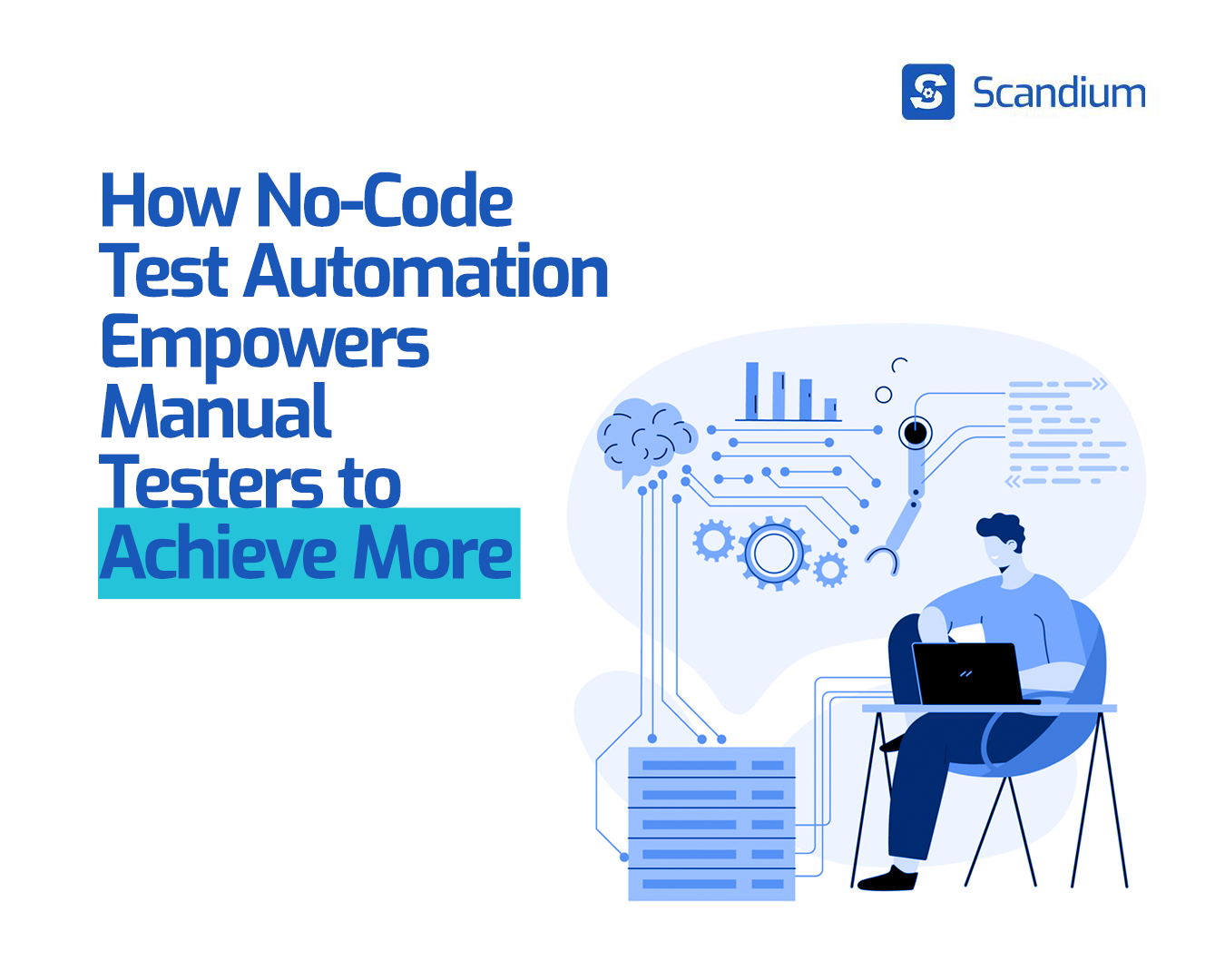
Before the rise of automation, testing was done manually. Even with the growing popularity of test automation tools, many manual testers remain in the field. However, these testers can now leverage automation tools to enhance their productivity and simplify their tasks. In this article, we will explore how test automation empowers manual testers.
In today’s fast-paced software development environment, automation is key to ensuring efficiency and quality. Yet, for many manual testers, transitioning to automation can feel overwhelming, often requiring programming skills beyond their expertise. This is where no-code test automation tools like Scandium come into play, providing a user-friendly solution that enables manual testers to not just adapt but excel in the ever-evolving world of software testing.
The Challenge of Manual Testing
Manual testing has long been essential to ensuring the quality of software products. It allows testers to perform exploratory testing, find edge cases, and provide detailed feedback from a user’s perspective. However, as software systems grow in complexity and development cycles shorten, manual testing can become time-consuming and inefficient.
The rise of automation was meant to alleviate this burden, but traditional test automation often requires coding knowledge, leaving manual testers at a disadvantage. This barrier not only slows down the testing process but also limits the potential for manual testers to contribute fully to the automation of the testing pipeline.
No-Code Test Automation: The Game Changer
No-code test automation tools like Scandium bridge this gap by offering an intuitive platform that doesn’t require programming knowledge. Manual testers can now automate repetitive tasks, such as regression testing, while still focusing on exploratory and usability testing—areas where human insight is irreplaceable.
Here’s how no-code test automation empowers manual testers:
- Ease of Use and Accessibility: Tools like Scandium provide a drag-and-drop interface, making test automation as simple as recording user interactions. Testers can quickly create automated test cases by interacting with the application, without the need for code. This eliminates the learning curve typically associated with automation.
- Increased Efficiency: By automating repetitive and time-consuming tasks, no-code platforms allow manual testers to focus on higher-value activities like edge case testing and user experience assessments. This results in faster test cycles and more thorough coverage.
- Collaboration and Transparency: No-code tools are built with collaboration in mind. Scandium, for example, allows manual testers, developers, and product managers to work together seamlessly. Test scenarios and results are accessible to the entire team, ensuring everyone stays on the same page and can contribute effectively.
- Scalability and Flexibility: As software projects grow, so do the demands on testing. No-code tools like Scandium enable testers to scale their automation efforts without needing to hire specialized automation engineers. Test cases can be easily modified, reused, and expanded as the project evolves.
- CI/CD Integration: Scandium integrates effortlessly with popular CI/CD platforms, ensuring that tests are automatically run during the development cycle. This continuous feedback loop keeps quality high while allowing manual testers to focus on strategic areas of testing, such as new feature exploration or bug fixes.
- Comprehensive Reporting and Troubleshooting: Manual testers benefit from detailed reports that pinpoint test failures and provide actionable suggestions for resolution. Scandium goes a step further by offering comprehensive diagnostics, helping testers quickly identify and resolve issues.
Real-World Impact: From Manual Tester to Automation Leader
With the power of no-code automation tools, manual testers can evolve their roles within software development teams. Instead of being sidelined by automation, they become champions of quality, playing a critical role in both automated and manual testing processes. They can now contribute to faster releases, higher quality software, and overall team efficiency.
In conclusion, no-code test automation tools like Scandium are revolutionizing how manual testers operate. By removing the technical barriers to automation, they empower testers to do more, faster, and with greater impact on the quality of the final product. For small and medium-sized businesses looking to enhance their testing processes without a steep learning curve or significant financial investment, no-code tools are the perfect solution to stay competitive in an ever-evolving digital landscape.
